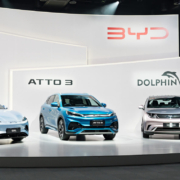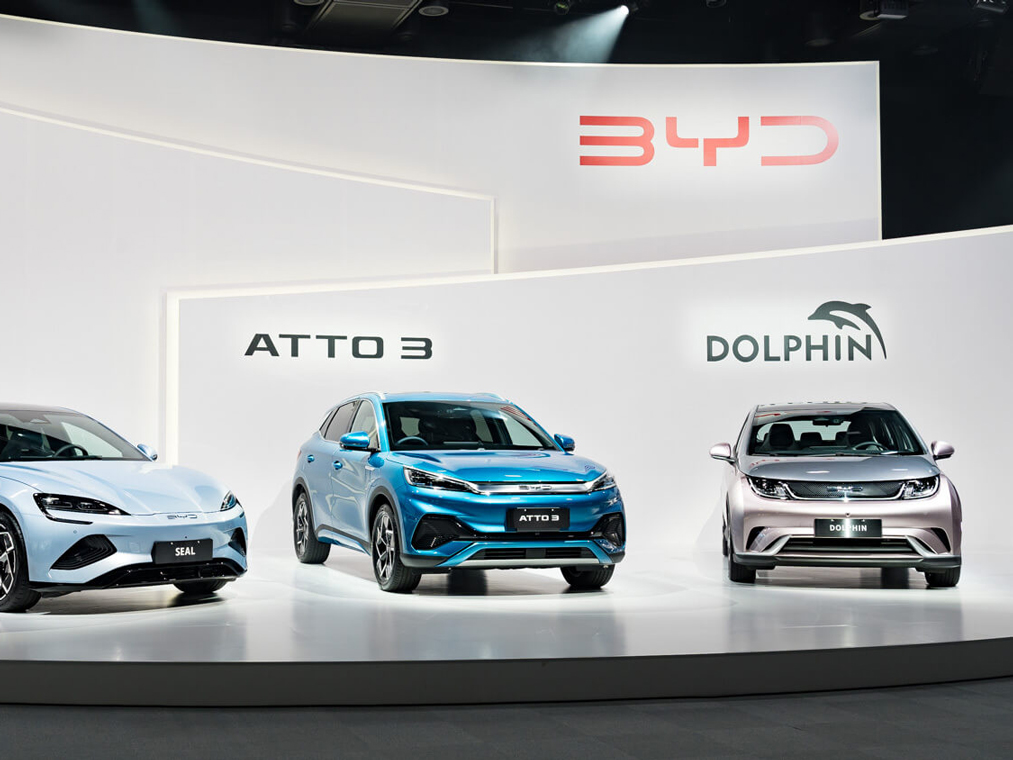BYD’s Deep Price Cuts Shake the Market: Long-Term Implications for its Financial Structure and Brand Strategy
Picture: BYD Picture Copyright © BYD
Recently, BYD announced time-limited discounts of up to 34 percent on 22 battery-electric and plug-in-hybrid models sold in China. The entry-level Seagull has dropped from RMB 69,800 to RMB 55,800 (about –20 %), while the dual-motor hybrid Seal has been slashed by RMB 53,000 to RMB 102,800, roughly 30 percent off. The unprecedented markdown triggered a broad sell-off in Chinese EV shares, BYD’s Hong Kong stock slid more than 7 percent, and peers such as NIO and XPeng also fell. Investors and analysts worry the move will ignite another price war and leave a lasting mark on BYD’s financial health and brand strategy.
- Shrinking Gross Margin and Mounting Financial Pressure
Cuts of this magnitude will compress BYD’s per-vehicle margin and weigh directly on its accounts. Commentators note that the campaign has already stoked fears of profit erosion. Across China’s auto industry, the average net margin in Q1 2025 was barely 3.9 percent, an unusually low level for a capital-intensive business. Unless soaring volume offsets fixed costs, BYD’s long-term earnings could fall sharply.
Pros and cons for cash flow: heavy discounts accelerate the clearance of older inventory, especially cars lacking the latest driver-assist features, thereby freeing cash and lowering carrying costs. Yet prolonged low pricing weakens internal cash generation and may force tighter control over future R&D and capacity expansion.
Balance-sheet buffer: BYD’s debt ratio is not light, but it holds RMB 61.3 billion in cash, and trade payables account for about 90 percent of total liabilities, giving short-term room to absorb margin pain. Still, an extended price war could drain even a large war chest.
Further cost-cutting: renowned for vertical integration (in-house batteries, chips, etc.), BYD already enjoys a low unit cost, but a 20–30 percent list-price cut exceeds the pure scale benefit. At the end of 2024, the company reportedly requested a uniform 10 percent price cut, significantly above the usual 3–5 percent. Supply-chain insiders warn that such pressure risks trapping the sector in a vicious cycle of low prices.
In the short term, hard bargaining may preserve some margin; in the long term, sustained pressure could undermine component quality and supply stability. Finding the right balance between market share and profitability is critical to financial soundness.
- Setback to High-End Brand Value and Positioning
BYD has long sought to escape its budget-car image and move into the RMB 300,000-plus segment via sub-brands Denza, Fangchengbao, and Yangwang. Frequent price wars erode that effort, teaching consumers to equate the marque with discounts and to doubt the resale value and intrinsic quality.
Fangchengbao Leopard 5, a luxury off-roader, marked its first anniversary in July 2024 by cutting RMB 50,000 across the range (–17 %, from RMB 289,800–352,800 to RMB 239,800–302,800) after weak sales.
The Denza N7 pure-electric SUV was launched in April 2024 with richer equipment, but at RMB 239,800, roughly RMB 62,000 below its 2023 debut price, a model once priced around RMB 300,000 was thrust into the low-200,000 bracket.
Such moves may win near-term orders yet inevitably sap brand equity, disappoint existing owners, and erode the confidence of would-be premium buyers.
The current discounts apply to many best-selling Dynasty and Ocean cars, signaling that BYD’s entire pricing architecture has loosened. A more aggressive affordability stance may dilute perceptions of refinement and make it harder to rival luxury badges such as BMW, Mercedes, or Audi.
Repeatedly offering big markdowns also hurts owner loyalty and word of mouth. BYD must ensure that its overall brand tone is not defined by the “price-slasher” label, or its future high-end ambitions will face an uphill battle.
- Gaining Share or Sinking into a Price-War Mire?
The main goal is clearly to enlarge market share. China’s NEV arena is crowded with nearly 100 brands. BYD intends to leverage its scale and cost control to outmaneuver rivals and solidify, if not expand its lead. Early signs show undecided buyers returning to showrooms and orders rising; lower entry points open new customer tiers, and the post-cut price of some hybrid SUVs is now below RMB 200,000, within reach of budget-constrained families keen on advanced driver-assist tech.
Provided the supply chain keeps up, BYD’s 2025 sales—already strong in the first four months and aimed at five million units—may accelerate further. The company briefly overtook Tesla in Europe’s EV market in April.
Yet an all-out price war worries many. Within days of BYD’s move, Geely offered RMB 5,000–18,000 subsidies on several hot NEVs. Start-ups XPeng and Neta responded. Even premium-positioned Li Auto launched promotions.
The leader’s cuts pull everyone in, upending price discipline. Volkswagen Group’s China chief has called such wars “destructive and unsustainable.” XPeng executives warn that, amid ferocious infighting, most Chinese brands may not survive the next decade.
China’s passenger car market has reached record volumes, yet sector profit margins continue to fall. Volume-for-margin is no lasting cure; it risks replaying the vicious cycle of overcapacity and price collapse.
In a worst-case shake-out, a few giants, including BYD, could survive with larger shares but at rock-bottom prices, leaving the value chain battered and the “spoils” worth far less.
Consumer expectations have already shifted: buyers now assume cars “should” cost this much, making future price increases hard, even if conditions improve. BYD must judge when to stop, lest it become trapped chasing volume without profit.
- Collateral Damage to the Dealer Network
End-market competition has piled unprecedented strain on dealers. Inventories have topped 3.5 million passenger cars, including 850,000 NEVs—an all-time high; many stores have dangerous inventory coefficients near 3.
Factory promotions help clear stock and free cash, and many frontline dealers welcome BYD’s push to move stagnant units. The current campaign, running until the end of June, offers a breathing space.
However, constant repricing also means That Inventory cars lose value overnight, eroding dealer margins. Expected factory rebates shrink, leaving some 4S shops selling at breakeven and relying on a few thousand yuan in bonuses per car. Slim earnings curb investment in service quality, hurting customer experience and brand image.
Persistent price warfare will sap dealer profitability and enthusiasm; if outlets shift focus to other brands, BYD’s future distribution and service reach will suffer. A stable network needs sustainable margins, and price cuts cannot become a permanent tool without risking channel erosion.
- Global Expansion Meets High-Price-Market Headwinds
While fighting at home, BYD is making significant strides overseas. Price advantage is a potent weapon: post-cut, some BYD models undercut Tesla by roughly 15 percent in Europe and dominate on price in Southeast Asia—mirroring how Xiaomi phones cracked foreign markets with “high spec, low price.”
In the short term, BYD could attract value-oriented buyers in Europe, the Americas, and the rapidly growing Asia-Pacific EV market. The Atto 3 (Yuan PLUS) was already competitive; lower Chinese prices leave room for future overseas cuts.
But in mature, premium-minded regions, a “cheap” tag can backfire. Western consumers care about brand credibility. Frequent domestic discounts may raise doubts abroad over price stability, after-sales support, and residual value, tilting buyers toward established marques.
Global expansion necessitates substantial investment in foreign plants, distribution channels, certification, and services. A protracted low-margin fight at home could drain the war chest, slow high-end overseas roll-outs, or force cost-conscious tactics, hindering brand building. In the worst case, the financial strain could delay the planned European mega factory or a U.S. launch.
Residual-value erosion in China will have international repercussions: prospective buyers who see poor Chinese resale data may hesitate. Convincing Western customers to pay for a new Chinese brand depends on trust; once shaken, sales stall.
- A Double-Edged Sword
BYD’s sweeping discounts bring immediate volume gains, inventory relief, and an opportunity to squeeze rivals—but at the cost of thinner margins, blurred premium aspirations, dealer pain, and the risk of dragging the whole sector into a ruinous race to the bottom. Whether BYD ultimately emerges stronger will hinge on its ability to strike a sustainable balance between market share, profitability, and brand equity, and on judging exactly when to hit the brakes on the price war it has reignited.





